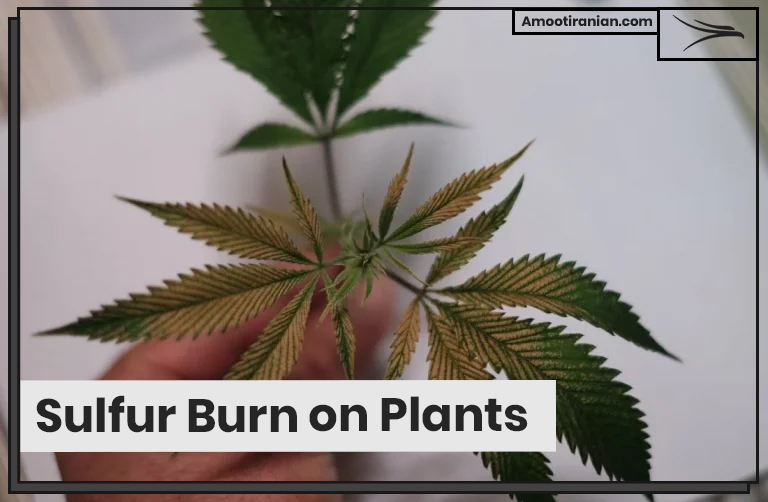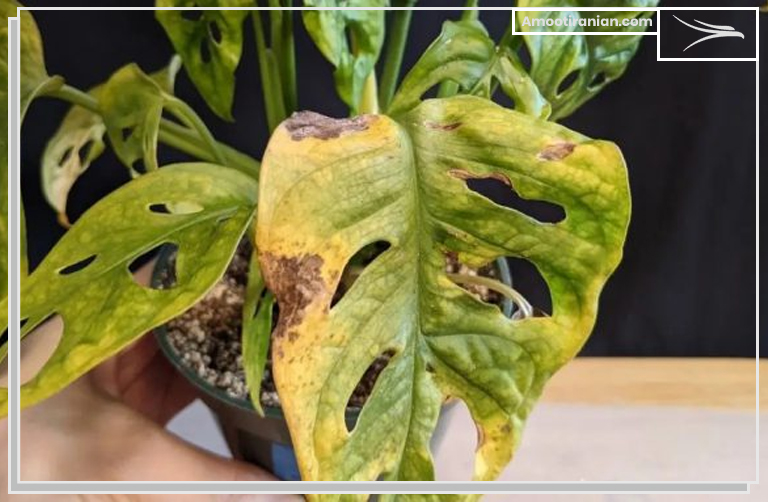.
Sulfur burn on plants, also known as sulfur phytotoxicity, occurs when plants are exposed to high concentrations of sulfur.
Sulfur is commonly used as a fungicide and pesticide in agriculture to control various pests and diseases.
However, if sulfur is applied at too high a concentration or too frequently, it can cause damage to plant tissues, resulting in sulfur burn.
.

.
.
What Happens If a Plant Gets Too Much Sulfur?
Can you add too much sulfur to soil? Can sulphur harm plants? Will sulfur burn my plants?
Sulfur burn on plants can manifest as yellowing or browning of leaves, stunted growth, and damage to plant tissues.
The severity of sulfur burn can vary depending on the plant species, the concentration and frequency of sulfur application, and the environmental conditions.
In severe cases, sulfur burn can result in:
- reduced plant growth
- decreased yield
- even plant death
.
Here is a table listing some of the potential damages of excess sulfur on plants:
| Damage | Description |
| Leaf yellowing | Leaves may turn yellow or brown and may fall off prematurely |
| Reduced growth | Plants may grow more slowly and produce fewer flowers or fruit |
| Root damage | Excess sulfur can damage roots and reduce nutrient uptake |
| Reduced photosynthesis | Excess sulfur can interfere with photosynthesis, reducing plant growth and yield |
| Altered flavor | Excess sulfur can alter the taste and quality of crops, making them unpalatable |
| Reduced resistance to stress | Plants that are exposed to excess sulfur may be more susceptible to disease, drought, or other stressors |
| Death of beneficial soil organisms | Excess sulfur can kill beneficial microorganisms in the soil, reducing soil fertility and plant health |
.
It’s important to note that the severity of these damages can vary depending on the plant species, the concentration of sulfur, and the environmental conditions.
To prevent these damages, it is important to follow proper application rates and timing of sulfur-containing products and to monitor plants for signs of damage.
.
How to Prevent Sulfur Burn on Plants?
To prevent sulfur burn on plants, it is important to follow proper application rates and timing of sulfur-containing products.
It is also important to avoid applying sulfur during periods of high temperature and humidity, as this can increase the risk of phytotoxicity. In addition, farmers and agricultural professionals can monitor plants for signs of sulfur burn and adjust sulfur application as necessary to minimize damage.
.
What Plants Are Sensitive to Sulfur?
While sulfur is an essential nutrient for plant growth, some plant species are more sensitive to high levels of sulfur than others.
Generally, plants in the Brassica family (such as broccoli, cabbage, and kale) are more sensitive to sulfur than other plants.
Other plant species that may be sensitive to sulfur include legumes (such as beans and peas), strawberries, and grapes.
Sulfur sensitivity can vary depending on the plant species, the growth stage of the plant, and the environmental conditions.
In some cases, sulfur sensitivity may be related to the presence of sulfur-containing compounds in the plant tissues, which can be toxic in high concentrations.
.

.
To minimize the risk of sulfur sensitivity in plants, it is important to follow proper application rates and timing of sulfur-containing products.
It is also important to avoid applying sulfur during periods of high temperature and humidity, as this can increase the risk of phytotoxicity.
Additionally, farmers and agricultural professionals can monitor plants for signs of sulfur sensitivity and adjust sulfur application as necessary to minimize damage.
Overall, while some plant species may be more sensitive to sulfur than others, sulfur is generally considered a safe and effective fertilizer and pesticide for use in plant production when applied appropriately.
.
Final Words
Overall, sulfur burn on plants is a potential risk associated with the use of sulfur-containing products in agriculture.
By following proper application practices and monitoring plants for signs of damage, farmers and agricultural professionals can minimize the risk of sulfur burn and ensure the safe and effective use of sulfur-containing products in plant production.
